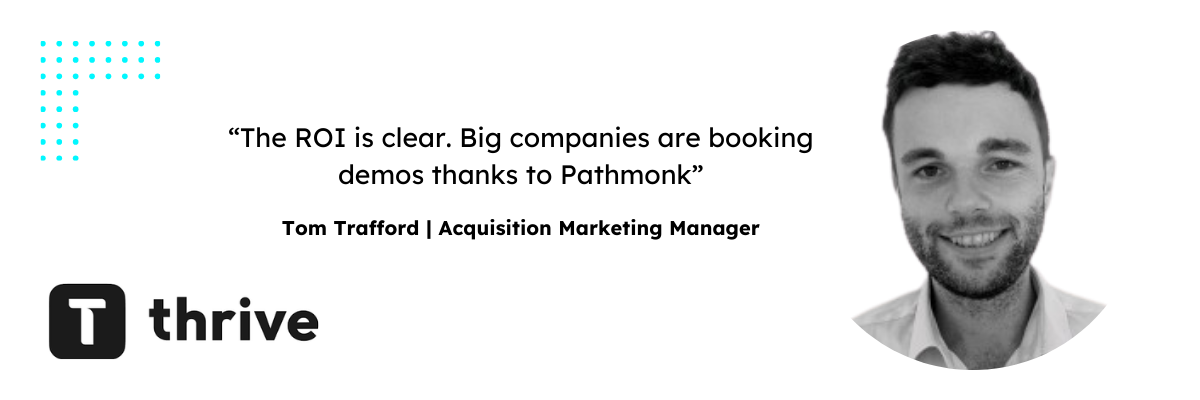
Imagine reaching out to a company for support and wondering, ‘Am I speaking with an AI or a human?’ This question is becoming increasingly common as AI technology continues to evolve and integrate into customer service.
The journey from traditional, human-only interactions to today’s sophisticated AI-driven engagements marks a significant shift in the customer experience. In this article, we trace this journey and explore the role of AI in modern customer journey management.
Table of Contents
The Evolution of Customer Interaction
Before the advent of digital communication and artificial intelligence, customer interactions were primarily human-centric. These interactions took place through face-to-face meetings, phone calls, and written correspondence. While these methods provided a personal touch, they were often limited by availability, scalability, and consistency. Customers could only access support during business hours, and the quality of service varied significantly based on the individual representative’s skills and mood.
The digital revolution brought a significant shift in how businesses interacted with their customers. The introduction of email, live chat, and social media opened new avenues for customer engagement and significantly improved the customer journey by making interactions more immediate and accessible. Customers no longer had to wait for business hours or endure long hold times on the phone. Instead, they could send an email or message and receive a response within hours or even minutes.
However, they also introduced new challenges, such as managing the volume of inquiries and maintaining prompt response times.
Integrating AI in the Customer Journey
The integration of artificial intelligence into the customer journey has marked a revolutionary shift in how businesses interact with their customers. This transformation began with the development of AI-powered tools designed to streamline and enhance various aspects of customer service and engagement.
The Rise of AI-Powered Chatbots and Virtual Assistants
One of the earliest and most widespread applications of AI in customer service was the deployment of chatbots and virtual assistants. These AI-driven tools were designed to handle basic customer inquiries, providing instant responses and freeing up human agents to focus on more complex issues.
These AI-powered chatbots provided significant advantages, including:
- 24/7 availability: Unlike human agents, AI chatbots can operate around the clock, providing support and assistance to customers at any time of day or night. This ensures that customers can always get the help they need, regardless of time zones or business hours.
- Instant responses: AI chatbots can process and respond to inquiries almost instantly, significantly reducing wait times for customers. This speed and efficiency lead to higher customer satisfaction and improved overall experience.
- Scalability: AI chatbots can handle a large volume of inquiries simultaneously, making them highly scalable solutions for businesses with high customer interaction rates. This scalability helps manage peak times without compromising service quality.
Dynamic Personalization with AI
AI’s ability to analyze vast amounts of data in real-time has opened new options for personalization in the customer journey. By leveraging machine learning algorithms and AI’s predictive capabilities, businesses can now deliver highly personalized experiences that cater to individual customer preferences and behaviors.
This is how AI-driven personalization works:
- Behavioral analysis: AI systems can track and analyze customer behavior across various touchpoints, such as website visits, purchase history, and interaction patterns. This data is used to create detailed customer profiles, enabling more personalized and relevant interactions.
- Predictive analytics: AI can predict future customer needs and preferences based on past behavior and trends. This allows businesses to proactively offer products, services, or content that align with customer interests, enhancing engagement and loyalty.
- Dynamic content delivery: AI-driven platforms can deliver dynamic content that adapts in real-time to the customer’s actions and preferences. For example, personalized product recommendations on an e-commerce site or tailored messaging in marketing campaigns.
Streamlining the Customer Journey with AI
AI has also played a crucial role in easing the customer journey by automating routine tasks and improving operational efficiency. This automation not only enhances the customer experience but also reduces the workload for human agents.
Some ways AI helps businesses optimize the customer journey include:
- Automated support: AI can handle common customer inquiries, such as FAQs, order tracking, and account management, without human intervention. This allows human agents to focus on more complex and value-added tasks.
- Workflow optimization: AI can optimize internal workflows by routing customer inquiries to the appropriate department or agent based on the nature of the request. This ensures faster resolution times and a smoother customer journey.
- Sentiment analysis: AI can analyze customer interactions to gauge sentiment and identify potential issues early. By understanding customer emotions, businesses can address concerns proactively and improve overall satisfaction.
The Human-AI Collaboration
While AI offers numerous benefits, the human touch remains invaluable in the customer journey. The most effective customer service strategies often involve a seamless collaboration between AI and human agents.
Here’s how this collaboration should work:
- Complex problem-solving: Human agents can handle complex, nuanced issues that AI may not fully understand. They can offer empathy, creativity, and personalized solutions that enhance the customer experience.
- Empathy and emotional intelligence: Human agents bring empathy and emotional intelligence to interactions, building rapport and trust with customers. This is especially important in sensitive situations where customers need reassurance and understanding.
- Continuous improvement: AI systems can learn from human agents by analyzing their interactions and solutions. This continuous learning helps AI improve its responses and become more effective over time.
Pathmonk’s Approach to AI-Powered User Engagement
Pathmonk is a prime example of how AI can be leveraged to enhance user engagement and optimize individual customer journeys. Pathmonk implements AI-driven personalization to create tailored microexperiences for website visitors, significantly improving the overall sales journey.
By understanding and responding to the unique needs and behaviors of each visitor, Pathmonk helps businesses multiply their results and achieve remarkable growth.
Here’s how Pathmonk can help you transform your user engagement strategy:
Increased Conversions with AI-Driven Personalization
Pathmonk’s AI technology continuously monitors and analyzes visitor behavior in real-time. By tracking actions such as page views, clicks, time spent on site, and navigation patterns, Pathmonk builds a comprehensive profile of each visitor.
Based on the collected data, Pathmonk delivers personalized content and recommendations that match the visitor’s interests and needs. This could include product suggestions, relevant articles, or customized CTAs, all designed to engage the visitor and guide them further along the sales funnel.
By providing the right message at the right time, Pathmonk increases the likelihood of conversion, turning casual browsers into committed customers.
Data-Driven Insights & Actionable Analytics
Pathmonk provides businesses with detailed analytics and insights into visitor behavior and engagement. These insights help businesses understand what is working and where improvements can be made, enabling data-driven decision-making.
Businesses can track the performance of their personalized experiences and engagement strategies through Pathmonk’s comprehensive dashboard. This tracking helps identify successful tactics and areas for further optimization.
Seamless Integration and Automation
Pathmonk seamlessly integrates with existing websites and marketing platforms, ensuring that businesses can quickly implement its AI-powered solutions without extensive technical work. This ease of integration means businesses can start benefiting from Pathmonk’s capabilities almost immediately.
On top of that, Pathmonk’s AI continuously learns from visitor interactions, allowing it to automatically optimize the content and engagement strategies. This ongoing optimization ensures that the user experience remains relevant and effective, adapting to changing visitor behaviors and preferences.
Whether a business is small or large, Pathmonk’s scalable solutions can accommodate different levels of visitor traffic and engagement needs. This flexibility allows businesses to grow without worrying about outgrowing their engagement platform.
The Impact of AI on Customer Expectations
Artificial Intelligence has set a new benchmark in customer service, fundamentally transforming expectations for speed, personalization, and availability. As consumers become accustomed to the swift, tailored, and constant interactions provided by AI, businesses must adapt quickly or risk falling behind.
Today’s customers demand instantaneous responses and customized experiences at any time of day. And as we’ve just seen, AI technologies, like chatbots and virtual assistants, enable these expectations by delivering real-time support and personalized content around the clock. As a result, companies that have not integrated AI into their customer journey are struggling to meet these heightened demands.
The shift is clear: businesses must leverage AI to enhance their customer engagement strategies. Without embracing this wave of change, businesses will inevitably fall behind, losing out to those who can offer the seamless, personalized experiences that modern consumers have come to expect.
From Interaction to Conversion: a Pathmonk Case Study
Thrive Learning, an online learning platform offering specialized courses, faced significant challenges in converting website interactions into high-ticket leads. Despite having a strong online presence and high-quality educational offerings, they struggled to turn visitor interest into actionable leads. Here’s a closer look at the challenges they encountered:
1. Low conversion rates:
While Thrive Learning attracted a substantial number of visitors to their website, they faced difficulty in engaging these visitors effectively. Many potential leads would browse the site without taking further action, resulting in low conversion rates.
2. Lack of personalization:
Thrive Learning’s website provided a one-size-fits-all experience, which did not cater to the diverse needs and interests of their audience. This generic approach failed to capture the attention of potential high-ticket leads who sought more personalized and relevant interactions.
Without the ability to tailor content to individual users, Thrive Learning struggled to present the right information at the right time. This lack of targeted content delivery hindered their ability to guide visitors through the sales funnel effectively.
3. Complex sales process:
The high-ticket nature of Thrive Learning’s courses meant that potential customers required more information and reassurance before making a purchase decision. The existing customer journey did not provide enough personalized touchpoints to build trust and address the specific concerns of these high-value prospects.
Prospective students often needed multiple interactions and detailed information before committing to a purchase, but Thrive Learning’s existing setup did not facilitate this extended engagement effectively.

Thrive Learning turned to Pathmonk to address these challenges. Pathmonk’s AI-driven personalization capabilities provided a robust solution to enhance their customer journey and drive conversions.
Pathmonk’s technology tracked and analyzed visitor behavior in real-time, allowing Thrive Learning to tailor content and interactions to individual user needs. This personalized approach ensured that visitors received relevant information and offers based on their interests and behaviors.
And these were the amazing results they got in the first month of implementing Pathmonk:
✅ 117% increase in high-ticket leads, demonstrating the effectiveness of Pathmonk’s AI-powered solutions.
✅ The personalized micro-experiences kept visitors engaged, reducing bounce rates and increasing the time spent on the site.
Increase +180%
leads
demos
sales
bookings
from your website with AI
Get more conversions from your existing website traffic delivering personalized experiences.

If you want to give Pathmonk a go, you can:
- Try our interactive personalized demo (it’s free and doesn’t involve Sales calls 😉)
- Book a product tour with our team (recommended if you want to know more about the product)
- Or directly set up your account and start boosting your conversions (perfect for busy marketers that know what they need)





